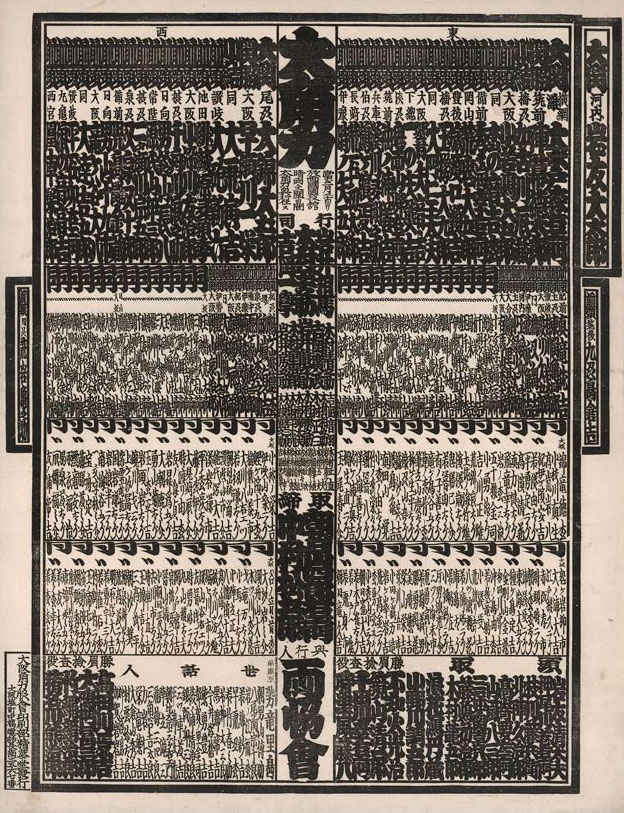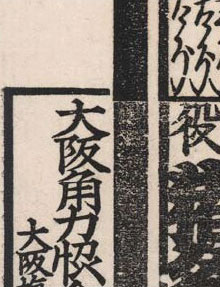- Relief printing
- Intaglio and planographic printing
- Color printing
- Bits and pieces
- Early photography in silver
- Non-silver processes
- Modern photography
- Color notes
- Color photography
- Photography in ink: relief and intaglio printing
- Photography in ink: planographic printing
- Digital processes
- Where do we go from here?
A Japanese Multiple-Block Woodcut

Woodcut. Artist unknown. Japanese broadside. c. 1935. 22 1/2 x 17 1/2" (57.2 x 44.5 cm). The Museum of Modern Art, New York. Gift of Richard Benson. This magnificent broadside concerns a sporting event. It was made from a set of six blocks held together during printing. Because each individual block could be made by a different cutter, such prints could be produced much more quickly than those cut on a single larger block.
This magnificent sheet was printed in Japan sometime in the 1930s to announce the results of a wrestling match. The match took place on one day and this announcement came out on the following one. A close examination of the original shows that the print was actually made from six separate blocks. A single brush-drawn tissue was painted with the text, cut into pieces, pasted onto the different blocks, and handed to different people to do the carving. Then the blocks were held together while the impression was made. Once again the division of labor inherent in printing shows up, but this time it was done to speed the process so that the news could get out fast.
 Detail of Woodcut. Artist unknown. Japanese broadside. c. 1935. 22 1/2 x 17 1/2" (57.2 x 44.5 cm). The Museum of Modern Art, New York. Gift of Richard Benson. A detail from the lower left of the print, showing the different impression from two blocks that varied somewhat in their surface. The characters to the left are from yet another woodblock.
Detail of Woodcut. Artist unknown. Japanese broadside. c. 1935. 22 1/2 x 17 1/2" (57.2 x 44.5 cm). The Museum of Modern Art, New York. Gift of Richard Benson. A detail from the lower left of the print, showing the different impression from two blocks that varied somewhat in their surface. The characters to the left are from yet another woodblock.

Detail of Woodcut. Artist unknown. Japanese broadside. c. 1935. 22 1/2 x 17 1/2" (57.2 x 44.5 cm). The Museum of Modern Art, New York. Gift of Richard Benson. A detail from the upper center of the print, showing the joint between two of the primary blocks.

